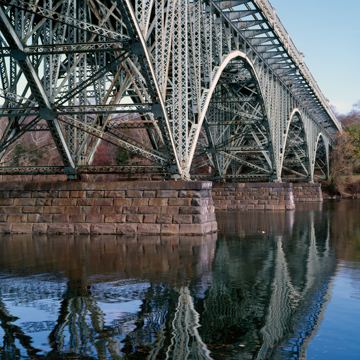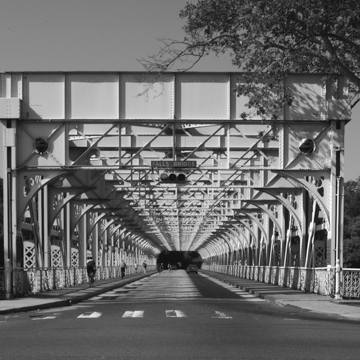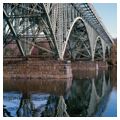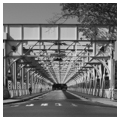The bridges of Philadelphia County crossing the Schuylkill are generally uninspiring, but two late-nineteenth-century bridges within Fairmount Park add to its pleasures. Just north of the crude welded steel Girard Avenue Bridge, which replaced the elegant wrought-iron structure designed in 1875 by Henry A. Sims to provide access to the Centennial Grounds and demolished in 1969, is the high steel-arched “trolley bridge” known as the Strawberry Mansion Bridge. A lacy confection of light steel members, it was designed to serve a gravity trolley line within the park and was constructed in 1894 by engineers Theodore Cooper and Russell Fair Jr. and the Phoenix Bridge Company. Farther north at East Falls is the steel box girder Falls Bridge that links Coulter Street with W. River Drive. Designed by James H. Windrim with city engineer George Smedley Webster and constructed in 1895, it is a dense web of steel beams and wrought-iron bands that was apparently intended to carry an upper deck. As a part of the city's celebration of the millennium, the Schuylkill bridges were lighted with a variety of light standards from Walnut Street to the Falls.
You are here
Schuylkill River Bridges
If SAH Archipedia has been useful to you, please consider supporting it.
SAH Archipedia tells the story of the United States through its buildings, landscapes, and cities. This freely available resource empowers the public with authoritative knowledge that deepens their understanding and appreciation of the built environment. But the Society of Architectural Historians, which created SAH Archipedia with University of Virginia Press, needs your support to maintain the high-caliber research, writing, photography, cartography, editing, design, and programming that make SAH Archipedia a trusted online resource available to all who value the history of place, heritage tourism, and learning.


















